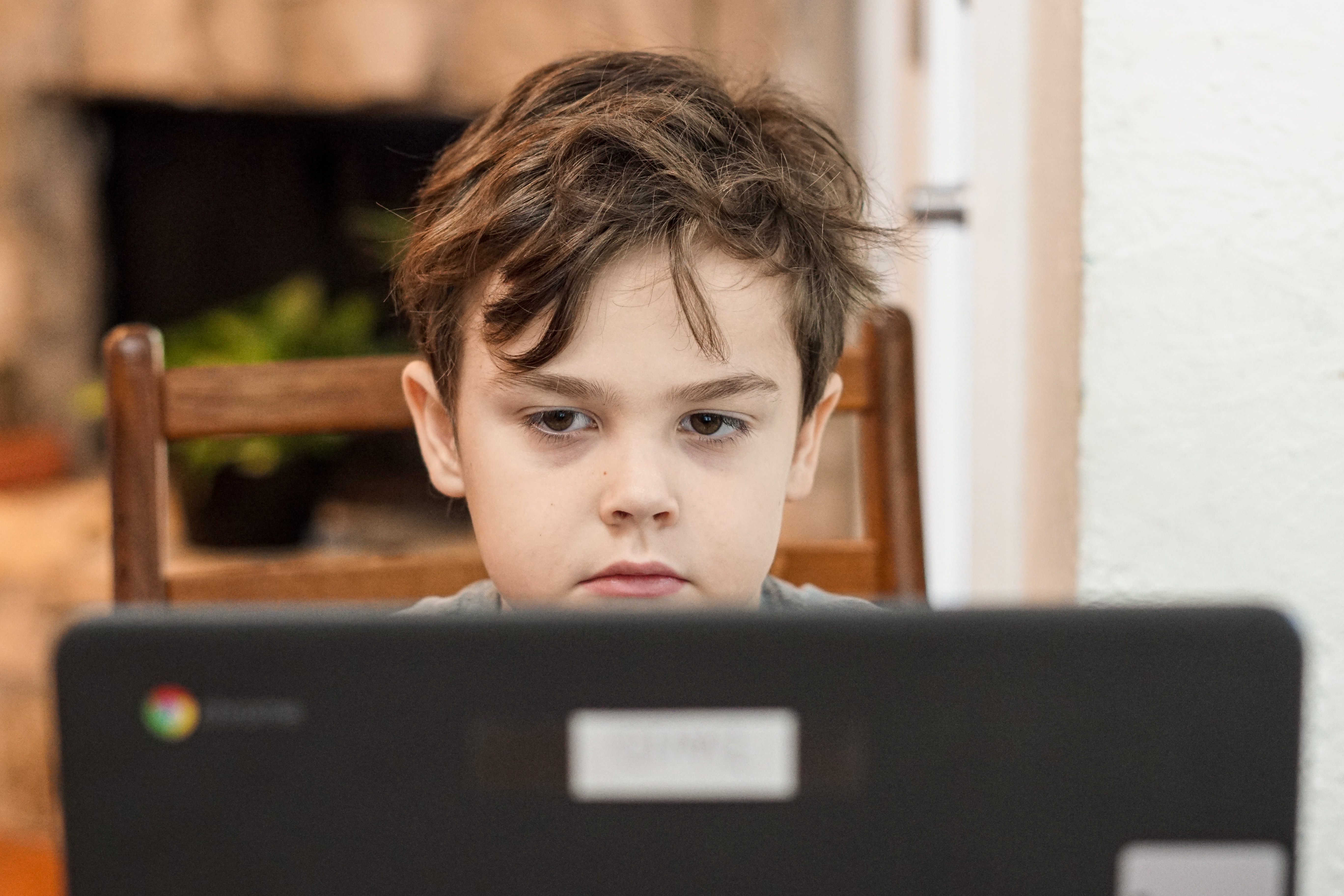The Consequences of Increased Screen Time for Kids During the Pandemic
Posted by May Recreation Content Team on

When the COVID-19 pandemic unexpectedly arrived in March 2020 many kids across the U.S. went overnight from a normal childhood environment where technology had a limited role to a digital-first world with school districts shutting down and lockdowns preventing outside play.
While the lockdowns eased and some school districts got back to in-person learning, or hybrid approaches, in the fall of 2020, other areas of the country had kids learning online for a full year.
Technology was no longer a nicety but was now a necessity.
“For some, technology is a savior — the lifeline keeping them in touch with friends and helping them maintain social skills; a welcome alternative to in-person school. For others, it’s a failed promise — unable to make up for the gaps in their education, their parents’ lost wages and their own mental health,” wrote Heather Kelly in The Washington Post’s “Growing Up on Screens: How a Year Online Has Changed Our Children.
The increased “screen time” for kids for more than a year has consequences that may take years to unravel.
“The consequences of this unintentional screen-time experiment are still murky, and the effects may take years to understand,” wrote Kelly.
Children’s Screen Time Soars During the Pandemic
Research from 2020 shows that children’s screen time during the COVID-19 pandemic soared, including:
- Monitoring company Bark, which parents and schools use to track over 5 million kids’ Internet usage, found a 144 percent increase in the number of messages children sent and received online in 2020 compared with the year prior. That includes messages on social media sites, Gmail and more.
- Roblox, an app popular among children ages 9 to 12 in the United States, averaged 31.1 million users per day in the first three quarters of 2020, an increase of 82 percent.
- Qustodio, a company that tracks online usage for children ages 4 to 15, found that in the first months of the pandemic, children in the U.S. nearly doubled their time spent on YouTube, up to 99 minutes a day average. Kids were also spending as much time on TikTok as YouTube, spending 80 minutes on average.
“Nearly a year into the coronavirus pandemic, parents across the country – and the world – are watching their children slide down an increasingly slippery path into an all-consuming digital life,” wrote Matt Richtel in the New York Times in January. “When the outbreak hit, many parents relaxed restrictions on screens as a stopgap way to keep frustrated, restless children entertained and engaged. But, often, remaining limits have vaporized as computers, tablets, and phones became the centerpiece of school and social life, and weeks of stay-at-home rules bled into nearly a year.”
Qustodio reported that screen times were already on the rise pre-pandemic and likely are not going to subside.
“We now live in a world with an estimated 25 billion connected devices worldwide,” the report said. “The world is not going to return to the way things were, because screen-time rates were already increasing. COVID-19 just accelerated the process.
Increased Screen Time Exposes Kids to More Dangers
One of the consequences of increased screen time over the past year is that kids are exposed to more digital and online dangers.
are exposed to more digital and online dangers.
“When our generation was growing up, our parents worried about seatbelts and bike helmets,” said Bark. “Today, children face dangers with technology like never before.”
Bark, which monitors 5.6 million children and their online activity, released its Annual Report: 2020 Research on Children and Technology that analyzed more than 2. 1 billion messages across texts, email, and 30+ apps and social media platforms.
This research offers an insight into what things children may experience online, often without the knowledge of their parents. The annual report found:
- Virtual learning during the pandemic led to new forms of online bullying with 76.7 percent of tweens and 82.0 percent of teens experiencing bullying as a bully, victim, or witness.
- Mental health during the pandemic has been a big issue and 45.5 percent of tweens and 66.3 percent of teens engaged in conversations online about depression. 41.4 percent of tweens and 66.6 percent of teens were involved in a self-harm/suicidal situation.
- 88.5 percent of tweens and 94.1 percent of teens expressed or experienced violent subject matter and/or thoughts online.
- One Canadian study found that 31.6 percent of young people were using illegal substances with peers via technology and Bark says 78.0 percent of tweens and 91.1 percent of teens engaged in conversations online surrounding drugs and/or alcohol.
- Increased screen time can lead to increased exposure to adult content with 70.90 percent of tweens and 87.9 percent of teens encountering nudity or content of a sexual nature online.
Is Increased Screen Time Rewiring Children’s Brains?
The New York Times article pointed out that scientists believe that children’s brains, well through adolescence, are considered “plastic”, meaning they can sift and adapt to changing circumstances.
In a sense, the constant digital stimulation may be rewiring children’s brains.
“There will be a period of epic withdrawal,” Keith Humphreys, psychology professor at Stanford University and former White House senior advisor on drug policy, told the New York Times.
Humphreys said young people will have to learn how to “sustain attention in normal interactions without getting a reward hit every few seconds.”
Dr. Jenny Radesky, a pediatrician who studies children’s use of mobile technology at the University of Michigan, told the New York Times, her advice to parents who have been different if she had known how long this screen time surge has lasted.
“I probably would have encouraged families to turn off Wi-Fi except during school hours so kids don’t feel tempted every moment, night and day. The longer they’ve been doing a habituated behavior, the harder it’s going to be to break the habit,” Radesky said.
A Pew Research Center report from October found that 63 percent of parents with school-age children were more concerned about screen time now than before the coronavirus pandemic. More than half of the parents surveyed were also worried about their children’s ability to maintain friendships and other social connections and about their emotional well-being.
Outdoor Play Time Can Balance Screen Time
Encouraging kids to go outside and play has benefits beyond getting them to put down their screens.
- Kids Become Healthier
- Cognitive and Emotional/Social Development is Improved
- Sensory Skills are Improved
- Kids Attention Span is Increased
- Overall Increased Happiness
Creative playgrounds that appeal to kids of all ages can help cut down on screen time. Contact May Recreation today in East Texas to find out how we can bring your playground vision to life.
